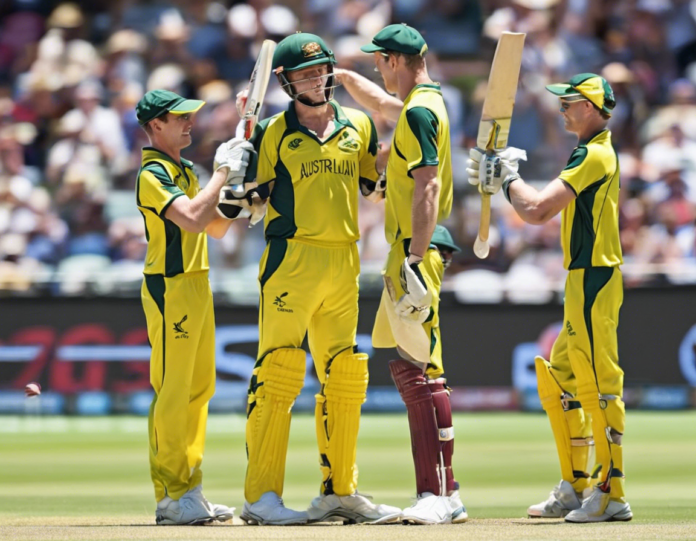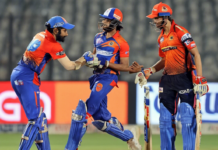When it comes to cricket, matches between Australia and West Indies have always been highly anticipated by fans around the world. The clash of the titans on the cricket pitch is always filled with fierce competition, breathtaking displays of skill, and nail-biting moments that keep spectators on the edge of their seats. Whether it’s a test match, a one-day international, or a T20 encounter, the battle between these two cricketing powerhouses never fails to disappoint.
In recent years, both Australia and West Indies have seen their fair share of ups and downs in terms of performance on the cricket field. While Australia boasts a rich cricketing history, with a formidable record in both test matches and limited-overs cricket, West Indies too has a legacy of producing some of the greatest cricketers to have ever played the game. Matches between these two teams evoke memories of legendary encounters, with players like Brian Lara, Ricky Ponting, Chris Gayle, and Steve Smith leaving their mark on the history of the sport.
One of the best ways to keep track of the action in a cricket match between Australia and West Indies is through a scorecard. A scorecard provides a comprehensive summary of all the key details of the match, from the performances of individual players to the overall team score and the status of the game. It allows fans to follow the match closely, even if they are unable to watch it live.
Understanding a Cricket Scorecard
A cricket scorecard typically includes various sections that provide detailed information about the match. Here are some of the key components you will find on a typical scorecard:
1. Team Details:
- Names of the two competing teams (Australia vs West Indies).
- Date and venue of the match.
2. Innings Summary:
- Details of each team’s innings, including the total runs scored and the number of wickets taken.
3. Top Performers:
- Leading run-scorers and wicket-takers from both teams.
4. Fall of Wickets:
- Sequence in which the wickets fell for each team, along with the runs scored at the time.
5. Extras:
- Additional runs conceded by the bowling side, such as wides, no-balls, and byes.
6. Match Status:
- Current match situation, including the target set or the number of runs required to win.
7. Player Statistics:
- Individual performance metrics for batsmen (runs scored, balls faced, strike rate) and bowlers (overs bowled, runs conceded, wickets taken).
Key Metrics to Look Out For
When following a cricket match through a scorecard, there are several key metrics that fans should pay attention to:
1. Runs Scored:
- Keep an eye on the total runs scored by each player, as well as the overall team score. This indicates the batting performance of the team.
2. Wickets Taken:
- The number of wickets taken by each bowler, along with details of how they were dismissed, provides insights into the bowling performance.
3. Run Rate:
- The run rate indicates the speed at which runs are being scored by the batting team. A higher run rate usually suggests aggressive batting.
4. Economy Rate:
- For bowlers, the economy rate reflects how many runs they concede in an over. A lower economy rate signifies good bowling control.
Frequently Asked Questions (FAQs)
1. Q: Where can I find a live scorecard for an Australia vs West Indies match?
- A: Live scorecards for cricket matches can be found on various sports websites, cricket-specific apps, and official cricket boards’ websites.
2. Q: How often are Australia and West Indies scheduled to play each other in cricket?
- A: The frequency of matches between Australia and West Indies can vary, depending on the cricket calendar and tournament schedules.
3. Q: What are some memorable moments from past Australia vs West Indies matches?
- A: Memorable moments include Brian Lara’s record-breaking innings, thrilling last-over finishes, and exceptional performances by legendary players from both teams.
4. Q: How do I interpret the bowling figures on a cricket scorecard?
- A: Bowling figures typically include overs bowled, runs conceded, wickets taken, and extras. Understanding these numbers helps in assessing a bowler’s performance.
5. Q: Which players have had the most impact in Australia vs West Indies matches historically?
- A: Players like Brian Lara, Ricky Ponting, Viv Richards, Shane Warne, and Curtly Ambrose have been standout performers in matches between Australia and West Indies.
In conclusion, a cricket scorecard is a valuable tool for fans to stay updated on the progress of a match between Australia and West Indies. By understanding the key components and metrics of a scorecard, enthusiasts can delve deeper into the performances of their favorite players and teams. So, the next time these cricketing giants face off, be sure to have a scorecard handy to enhance your viewing experience and appreciation of the game.









